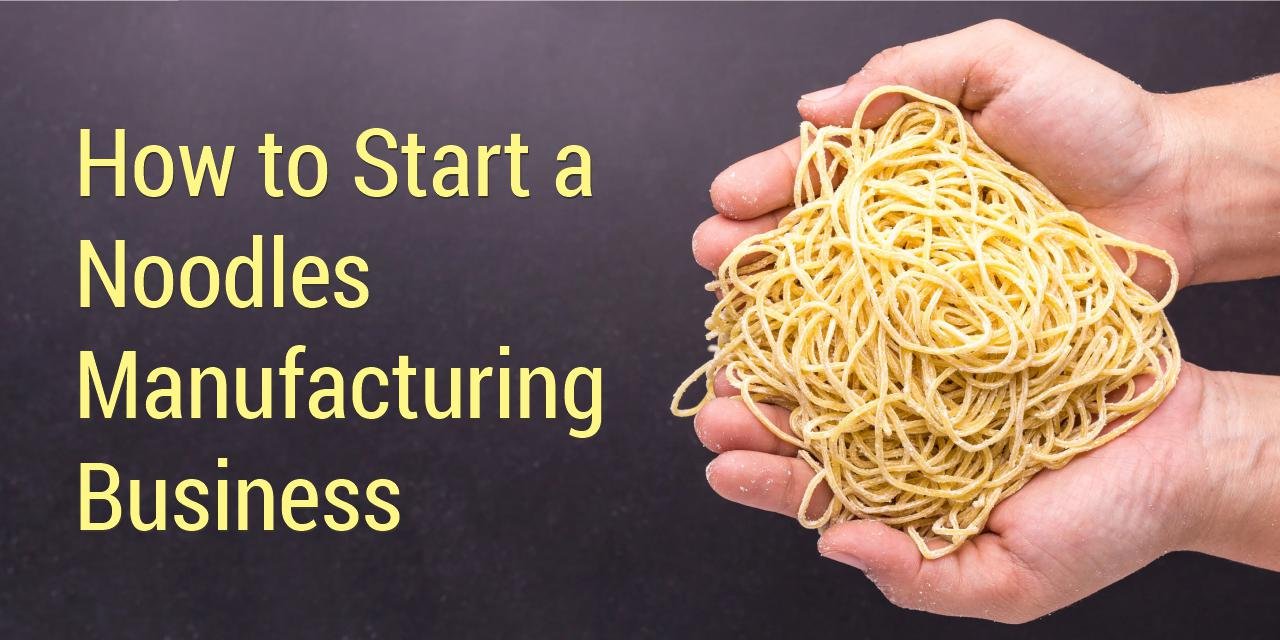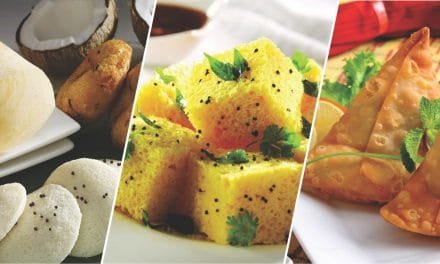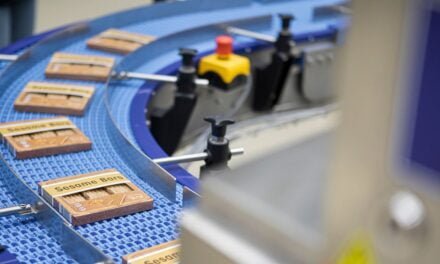The noodles manufacturing business is one of the most promising ventures in India’s food processing sector. With the rising demand for quick and convenient food, noodles have become a staple in both urban and semi-urban markets. This article explains how to start a noodles manufacturing business step by step, covering everything from market research and registration to machinery setup, raw materials, production process, and cost estimation.
In India, instant noodles have become a household favorite among peole of all age groups. The increasing urban population, changing lifestyles, and increasing disposable incomes have significantly contributed to the rise and popularity of instant foods. For many working professionals, students, and homemakers, instant noodles offer a quick and affordable meal option that fits their busy routines.
Detailed step-by-step guide to starting a profitable noodles manufacturing business
Recent industry reports indicate that the Indian instant noodles market was valued at USD 1.59 billion in 2025 and is projected to grow at a compound annual growth rate (CAGR) of 13.39%, reaching nearly USD 2.98 billion by 2030. This demand is not limited to metro cities but is also expanding to semi-urban and rural areas, driven by the increasing presence of supermarkets, hypermarkets, and e-commerce platforms.
For entrepreneurs, noodle manufacturing offers an excellent opportunity to establish a profitable business. The same production unit can diversify into related products such as instant noodles, egg noodles, pasta, vermicelli, spaghetti, and ready-to-cook soup mixes, creating multiple income streams from one setup.
| Also Read: 10 Best Instant Noodles Brands in India
Guide to Start a Noodles Manufacturing Business
Step 1: Analyze Market Demand and Potential
Before starting production, it is important to understand the local market and identify the most popular brands in your area. Study their product quality, packaging design, flavors, and price points to assess what appeals to customers. Evaluate how these brands promote their products and the channels they use for distribution. Such insights will help you determine your brand positioning, pricing, and marketing strategies.
Noodles are highly in demand across households, street food stalls, restaurants, and canteens. Urban centers continue to lead in consumption, but smaller towns are catching up fast as packaged foods become more accessible. By understanding these patterns, you can set realistic production targets and identify the right distribution network for your region.
Step 2: Prepare a Detailed Project Report
A detailed project report serves as a blueprint for the business. It outlines the total investment required, operating costs, and potential returns. You should include the cost of land and construction, machinery and equipment, raw materials, salaries, utilities, and other operational expenses. On average, the setup cost for a small-scale noodles manufacturing unit in India is around ₹22-25 lakh, depending on whether you own or rent the premises.
It is advisable that you consult with an industry expert to get help. A sample calculation might include ₹9.85 lakh for land and building, ₹4.74 lakh for machinery and equipment, and ₹35,000 for pre-operative expenses, totaling about ₹14.94 lakh in fixed costs. Working capital for three months can amount to around ₹7.81 lakh, bringing the total project cost to approximately ₹22.75 lakh. Costs will vary according to production capacity and location, but these estimates provide a general guideline for budgeting.
SAMPLE COST ESTIMATE:
| Particulars | Amount (INR) |
| Fixed Costa | |
| Land & Building Construction | 9,85,000 |
| Machinery & Equipment | 4,74,000 |
| Pre-operative Expenses | 35,000 |
| Total Fixed Cost (A) | 14,94,000 |
| Working Capital (3 months) | |
| Staff Salaries | 30,500 |
| Raw Materials | 1,90,000 |
| Utilities | 11,000 |
| Other Contingent Expenses | 29,000 |
| Total Working Cost for 3 months (B) | 7,81,500 |
| Total Project Cost (A+B) | 22,75,500 |
Step 3: Arranging Project Finance
Once your project report is ready, the next step is to go ahead and arrange funding. If you have sufficient capital, you can finance the project yourself. However, most entrepreneurs choose to apply for bank loans or seek support through government subsidy schemes available under MSME (Micro, Small, and Medium Enterprises) initiatives. These schemes often provide low-interest loans and incentives to promote food processing ventures. Some machinery suppliers also offer installment plans or equipment leasing options to reduce initial costs.
| Also Read: How to Get Government Subsidy for Small Food Business in India
| Also Read: How to Obtain FSSAI Vegan Logo Endorsement
Step 4: Business Registration and Licensing
Like any food business, a noodles manufacturing unit must comply with several legal requirements.
First, register your business as a proprietorship, partnership, LLP, or private limited company, depending on your preferred structure. You will need to apply for a GST registration to handle taxation and obtain a trade license from the local municipal authority. Registering under the MSME (Udyog Aadhaar) category can help you access government benefits and financial support.
An FSSAI license is mandatory for all food processing entities, with the type (Basic, State, or Central) determined by annual turnover: under ₹12 lakh requires Basic Registration; ₹12 lakh–₹20 crore calls for a State License; and above ₹20 crore, a Central License. The FSSAI evaluates aspects such as premises hygiene, quality of equipment, staff qualifications, and product testing during the approval process, and licenses must be kept current. Here is a guide on how to proceed for FSSAI Registration or FSSAI License.
For better brand credibility, consider applying for BIS certification under IS:1485:1976, which affirms adherence to Indian quality standards for noodles and is valuable for widespread market acceptance. Protecting your brand and packaging requires trademark registration with the Indian Trademark Registry, which typically spans 18–24 months from application to certificate, and provides ten years of renewable protection.
If your business plans to export noodles, securing an Import Export Code (IEC) from the Directorate General of Foreign Trade is compulsory. The IEC is a unique 10-digit identifier required for most cross-border trade operations and is currently valid for 24 months, so timely renewal and regulatory compliance are necessary.
| Also Read: How Food Business Operators Can Protect their Legitimate Rights
Registrations and compliance certificates:
• Business Registration: Choose your business structure (Proprietorship, LLP, or Pvt. Ltd.) and register accordingly.
• GST Registration: Enables tax compliance and B2B transactions.
• Trade License: Obtain from the local municipal body to operate legally.
• MSME (Udyog Aadhaar): Not mandatory, but it helps in getting loans and government support.
• FSSAI License: Mandatory for all food businesses to ensure quality and safety compliance.
• BIS Certification IS:1485:1993 (Reaffirmed 2020): Boosts credibility and allows nationwide sales.
• Trademark Registration: Protects your brand name and packaging design from duplication.
• Import Export Code (IEC): Needed for export operations if you plan to sell internationally.
Having all licenses in place builds trust with consumers and distributors.
Step 5: Selecting the Location and Setting Up the Unit
Choosing the right location is vital for smooth operations. A small-scale noodles unit typically requires around 800 square feet of space with access to electricity, clean water, and transport facilities. Renting a commercial space can reduce the initial investment and allow flexibility for future expansion. The site should be easily accessible for suppliers and distributors to minimize logistics costs. Setting up near markets or industrial areas can also reduce transport time and improve distribution efficiency.

Step 6: Procuring Machinery and Equipment
The choice of machinery depends on your scale of operation and production capacity. You can opt for semi-automatic or fully automatic machines. Basic equipment includes a vertical powder mixer for blending flour, a dough mixer, and a noodles-making machine with interchangeable die heads to produce noodles of different thicknesses. You will also need a steaming or boiling unit, drying or frying equipment, weighing scales, and packaging machines.
Modern packaging machines ensure hygienic and consistent packing, which is essential for maintaining product quality and consumer trust. It’s advisable to buy equipment from reliable manufacturers who provide installation, training, and after-sales support.
| Also Read: Optimizing Cleaning & Maintenance of Food Processing Equipment
Selecting the right machinery determines your product quality and production speed.
• Vertical Powder Mixer: For uniform blending of flour and ingredients.
• Dough Mixer (Blade Type): Prepares consistent, smooth dough.
• Noodle-Making Machine: Shapes noodles using various die heads for different thicknesses.
• Steaming Unit & Boiler: Cooks the noodles to the desired texture.
• Drying or Frying Unit: Removes moisture to extend shelf life.
• Weighing & Packaging Machine: Ensures uniformity and hygienic packing.
• Storage and Trays: For cooling, stacking, and drying.
Buy from reliable manufacturers with after-sales service and spare parts support.
Step 7: Source Raw Materials and Ingredients
The primary raw materials used in noodle production are wheat flour (maida) and starch. Depending on the recipe, you may also need salt, sugar, spices, garlic, ginger, and sodium bicarbonate to enhance flavor and texture. Packaging materials such as moisture-proof films and carton boxes are equally important to preserve freshness and ensure safe transport. Always maintain consistent quality standards for raw materials, as taste and texture are key to customer satisfaction.
Quality ingredients are crucial for product taste, texture, and shelf life.
• Primary Ingredients: Refined wheat flour (maida) and starch form the noodle base.
• Additives and Flavors: Salt, sugar, spices, garlic, and ginger improve taste.
• Chemical Agents: Sodium bicarbonate or edible gum enhances elasticity and smoothness.
• Packaging Materials: Use moisture-proof films to preserve freshness and outer cartons for bulk transport.
Reliable suppliers and consistent quality ensure a loyal customer base.
Step 8: Manufacturing Process
The noodles manufacturing process involves a series of well-defined steps. First, flour and starch are mixed with water to form dough. The dough is then rolled or extruded into sheets or strands, depending on the type of noodle being made. These noodles are steamed to partially cook them before being fried in hydrogenated vegetable oil or air-dried to remove moisture. Once cooled, the noodles are cut to size and packaged with tastemaker sachets or seasoning packets. However, you may also sell the wet noodles as a fresh product to the local restaurant owners or food stall owners.
Instant noodles typically have a shelf life of six to eight months and cook within two to three minutes, making them highly convenient for consumers.
| Also Read: How to Package Ready-to-Eat (RTE) Foods
| Also Read: How to Ensure Food Safety Practices
The basic manufacturing process involves mixing, steaming, drying, and packaging.
• Mixing: Combine flour, starch, and additives with water to form dough.
• Sheeting or Extrusion: Shape the dough into sheets or strands, depending on the noodle type.
• Steaming: Partially cook noodles to retain elasticity.
• Frying or Drying: Fry in hydrogenated oil (for instant noodles) or air-dry for healthier versions.
• Cooling and Cutting: Standardize sizes and portions.
• Flavoring and Packaging: Add tastemakers and seal in moisture-proof pouches.
Modern instant noodles have a 6-8 month shelf life and cook in just 2-3 minutes.
Starting from Home
For beginners, starting a home-based noodles business can be an effective way to test the market. Small-capacity noodle-making machines are available online, making it easier to produce limited batches for local sale. Selling through nearby stores, community markets, or online platforms helps you understand customer preferences before scaling up. Once demand grows, you can expand into a commercial unit with higher capacity and broader distribution.
| Also Read: How to Start a Small-Scale Potato Chips Factory
| Also Read: How to Start a Profitable Mini Dal Milling Business
| Also Read: How to Start a Papad Making Business
Conclusion
Starting a noodles manufacturing business requires moderate investment, practical planning, and a clear understanding of the market. With proper licensing, quality control, and efficient distribution, the business can deliver steady profits and long-term growth. As India’s appetite for convenient, ready-to-cook meals continues to rise, this industry offers excellent prospects for both new and experienced entrepreneurs.
FAQs on Noodles Manufacturing Business
The total investment for a small-scale noodles manufacturing unit in India generally ranges between ₹15-25 lakhs, depending on factors such as production capacity, machinery type (semi-automatic or fully automatic), and location. Starting from a rented facility can significantly reduce setup costs.
You will need several registrations and licenses, including FSSAI certification, GST registration, a Trade License, and MSME (Udyog Aadhaar) registration. Additionally, a Trademark protects your brand, while BIS certification (IS:1485:1993) ensures product quality. If you plan to export, an Import Export Code (IEC) is also required.
The primary ingredients include wheat flour (maida) and starch. Depending on the recipe and flavor, other ingredients such as salt, sugar, spices, garlic, ginger, and sodium bicarbonate may be added. You’ll also need moisture-proof packaging materials and carton boxes for safe storage and transport.
Yes, it can be very profitable when managed well. A small-scale noodles unit can earn a profit margin of 25-35%, depending on production volume, distribution efficiency, and marketing strategy. The business offers consistent demand and scope for product diversification into vermicelli, pasta, and other related items.
Effective marketing combines product quality, packaging appeal, and brand visibility. Start by supplying local grocery stores, canteens, and small retailers. Gradually expand to supermarkets, distributors, and online marketplaces. Promotional sampling, social media marketing, and attractive packaging can also help in brand recall and customer retention.
Yes, it’s possible to start on a small scale from home to test the market. Compact noodle-making machines are available online for household-level production. Selling locally or through social media helps you build initial demand before scaling up to a commercial setup.
Instant noodles typically have a shelf life of 6 to 8 months when properly fried or dried and packed in airtight, moisture-proof pouches. Ensuring good quality ingredients and hygienic packaging processes is key to maintaining shelf stability.
Instant noodles are pre-cooked, dried, and often fried in oil, allowing them to cook quickly (usually within 2-3 minutes). Regular noodles, on the other hand, are uncooked or semi-cooked and require boiling before consumption. Instant noodles also include tastemaker sachets for added flavor.
Some common challenges include maintaining consistent product quality, managing raw material costs, ensuring compliance with food safety regulations, and competing with established brands. Strong branding, efficient production, and reliable distribution can help overcome these hurdles.
Once your brand gains traction, you can diversify into pasta, macaroni, or ready-to-eat soup mixes. Investing in automatic machinery can increase efficiency, while regional distribution partnerships and e-commerce presence can help expand your market reach.
Disclaimer: Every reasonable effort has been made to obtain and present the most accurate and up-to-date information available on the subject. However, Computuype Media assumes no responsibility or liability for any errors, omissions, or subsequent changes to the data resulting from updates or revisions made by the sources after the preparation of this document. In no event shall Computuype Media be held liable for any direct, indirect, incidental, consequential, punitive, or special damages arising out of or in connection with the use of the information contained herein.
Have a news or topic to share with industry? Write to us editorial@pfionline.com

















